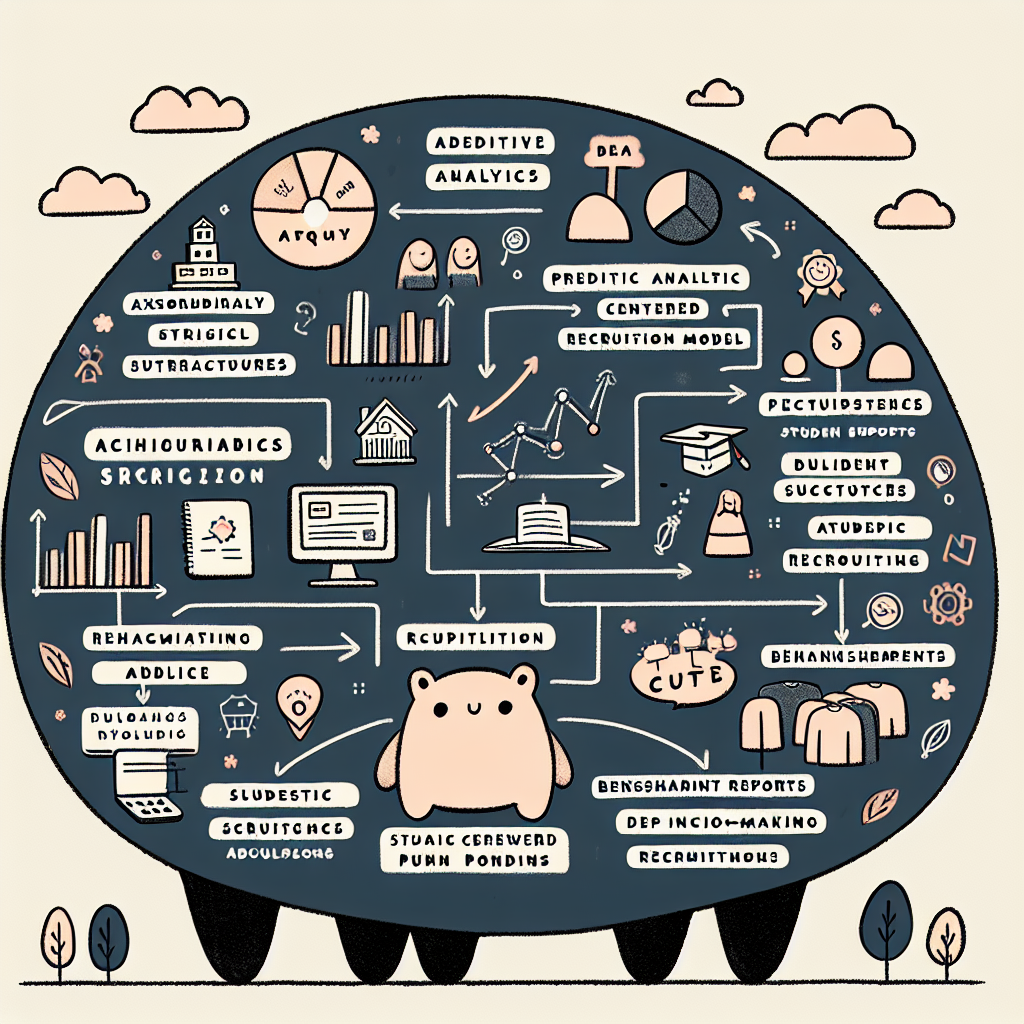Introduction
In recent years, college admissions trends have undergone significant changes. Factors such as test-optional policies, increased application volumes, and evolving diversity goals have reshaped how institutions evaluate prospective students. The COVID-19 pandemic accelerated many of these shifts, prompting colleges to reconsider traditional metrics like standardized testing and place greater emphasis on holistic review processes.
Understanding college admissions trends is essential for students preparing their applications, educators guiding them, and institutions aiming to attract a diverse and qualified applicant pool. Data-driven insights help all stakeholders adapt to the changing landscape, make informed decisions, and stay competitive in an increasingly dynamic admissions environment.

📈 Rising Volume of College Applications
The landscape of college admissions trends is being reshaped by a significant increase in the number of applications submitted nationwide. For the 2024–25 admissions cycle, there has been a 4% overall rise in college applications, continuing a steady upward trajectory (Inside Higher Ed). This national surge reflects broader patterns seen across individual institutions. For example, North Carolina A&T has experienced a staggering 246% increase in applications over the past decade (Chronicle of Higher Education).
Several factors are driving this growth. The expansion of the Common Application has made it easier for students to apply to multiple colleges with a single submission. At the same time, the adoption of test-optional policies has reduced barriers for many applicants, encouraging more students to consider institutions they might have previously deemed out of reach. Colleges are also leveraging digital recruitment tools more effectively, reaching students through virtual tours, webinars, and targeted online outreach. Additionally, there has been a post-pandemic rebound in interest in higher education, as students and families refocus on the long-term value of a college degree. These elements together contribute to the ongoing shift in college admissions trends.

Shifting Demographics of Applicants
Surge Among Underrepresented Minority Students
Recent college admissions trends show a notable increase in applications from underrepresented minority students. According to Inside Higher Ed, applications from these groups rose by 12%, compared to just a 2% increase among non-minority students. This surge has significant implications for campus diversity, indicating a shift toward broader access to higher education for historically marginalized populations.
Institutions Responding with Inclusive Strategies
In response to this demographic shift, many colleges and universities are implementing inclusive strategies to attract and support diverse applicants. These efforts include targeted outreach initiatives and partnerships with community organizations. Additionally, institutions are expanding scholarships and need-based financial aid programs to reduce economic barriers and promote equitable access.
Enrollment Reflects Application Growth
The increase in applications is also reflected in enrollment data. In 2025, total postsecondary enrollment rose by 4.5%, with a 5.5% increase in first-year student enrollment, as reported by Inside Higher Ed. These figures highlight how evolving college admissions trends are reshaping the composition of student bodies nationwide.

🎓 Evolving Educational Pathways
Growth of Short-Term and Credential Programs
College admissions trends increasingly reflect a shift toward short-term and credential-based educational options. In spring 2025, undergraduate enrollment in certificate programs rose by 4.8%, signaling heightened interest in alternatives to traditional four-year degrees (Inside Higher Ed). This growth highlights a broader demand for career-focused and flexible education models that allow students to quickly gain job-ready skills.
Changing Definitions of “College”
The definition of “college” is evolving beyond the conventional campus-based experience. Increasingly, students are pursuing non-degree pathways such as coding bootcamps, microcredentials, and stackable certificates. These options are shaped by workforce demands and a growing emphasis on return on investment (ROI) in education. As a result, college admissions trends are adapting to include a more diversified array of educational trajectories, aligning with the practical needs of today’s learners and employers.

Strategic Implications for Colleges and Universities
As college admissions trends continue to evolve, colleges and universities must adapt their strategies across several key areas to remain competitive and equitable.
Admissions and Recruitment
With increased competition for top candidates, institutions are intensifying their recruitment efforts. This includes the broader use of predictive analytics and customer relationship management (CRM) tools to identify and engage prospective students more effectively. These technologies allow admissions teams to forecast yield rates and tailor communication strategies, increasing efficiency and responsiveness. Additionally, there is a growing emphasis on equity-centered recruitment models that prioritize access and inclusion, helping institutions reach students from historically underrepresented backgrounds.
Resource Allocation and Student Support
Changing college admissions trends also require a reevaluation of campus resources. The influx of larger and more diverse student cohorts necessitates scalable onboarding processes and expanded support services. Colleges are investing in enhanced academic advising, mental health resources, and student success initiatives to ensure retention and engagement. These investments must be planned strategically to align with shifting demographics and evolving student needs.
Transparency and Data-Driven Decision-Making
Transparency is becoming increasingly important in college admissions. Institutions are leveraging tools like NACAC’s "State of College Admission" report (NACAC) to benchmark and inform their practices. Public access to data on application numbers, acceptance rates, and yield trends enables both institutions and prospective students to make more informed decisions. This data-driven approach helps colleges align their strategies with the realities of the admissions landscape while maintaining accountability.

Regional and Institutional Variability
College admissions trends show significant variation across regions and types of institutions. While some universities have seen dramatic increases in applications, others have experienced modest growth or even declines. This uneven growth underscores the influence of factors like geography, institutional mission, and investment in outreach.
Public Historically Black Colleges and Universities (HBCUs) and regional public universities have seen some of the most substantial gains. These institutions often serve local or underserved populations, and increased demand may reflect both demographic shifts and successful recruitment efforts. Additionally, schools that have made strategic investments in marketing and branding tend to outperform peers in application growth.
Case Study: North Carolina A&T
North Carolina A&T State University, a public HBCU, exemplifies the potential impact of targeted outreach. Over the past decade, the university has seen a 246% increase in applications, according to the Chronicle of Higher Education. This surge is attributed to a focused branding strategy and deliberate engagement with prospective students. The institution's success illustrates how marketing and institutional positioning can shape college admissions trends at the regional and institutional level.

📊 Future Outlook
Anticipated Trends
College admissions trends are expected to continue evolving rapidly in the coming years. One of the most notable shifts is the continued growth in both the number of applications submitted and enrollment in credential programs. As more students seek flexible and career-oriented alternatives to traditional degrees, credential programs are gaining popularity, forcing institutions to expand their offerings.
Another significant development is the increasing investment in AI and automation within the admissions process. Colleges are beginning to use machine learning tools to streamline application reviews, personalize outreach, and improve decision-making efficiency. These technologies can help institutions manage higher volumes of applications while maintaining a fair and responsive admissions process.
Policy changes are also poised to reshape the admissions landscape. The recent Supreme Court decision ending affirmative action in college admissions is expected to alter demographic patterns at selective institutions. Additionally, the ongoing simplification of the Free Application for Federal Student Aid (FAFSA) aims to make financial aid more accessible, potentially broadening the applicant pool and changing enrollment behaviors across socioeconomic groups.
Preparing for a Changing Landscape
To navigate these shifting college admissions trends, students and families must stay informed and adaptable. Understanding new application expectations, exploring alternative credentials, and preparing for changes in financial aid processes are all essential steps. Families should also pay attention to how AI tools may influence the evaluation of applications and tailor their submissions accordingly.
Colleges, in turn, must adapt to remain competitive and equitable. This includes investing in technology to support efficient admissions workflows, developing strategies to maintain diversity without race-conscious policies, and offering programs that align with emerging student interests. Institutions that proactively respond to these trends will be better positioned to attract, support, and graduate a diverse and talented student body.

Conclusion
The landscape of college admissions trends continues to evolve, marked by significant growth, increased diversity, and ongoing innovation. As institutions expand their reach and adapt to new challenges, students from a wider range of backgrounds are finding pathways to higher education. Technological advancements and data-driven approaches are also reshaping how colleges evaluate applicants and how students navigate the application process.
Staying informed through reliable research and data tools is essential for students, families, and educators looking to make strategic decisions. Understanding these trends helps stakeholders anticipate changes and respond effectively.
Ultimately, the college admissions process has become more dynamic—and more inclusive—than ever before. By recognizing the shifts in demographics, policies, and practices, we can better support a system that reflects the diverse and complex needs of today's students.














